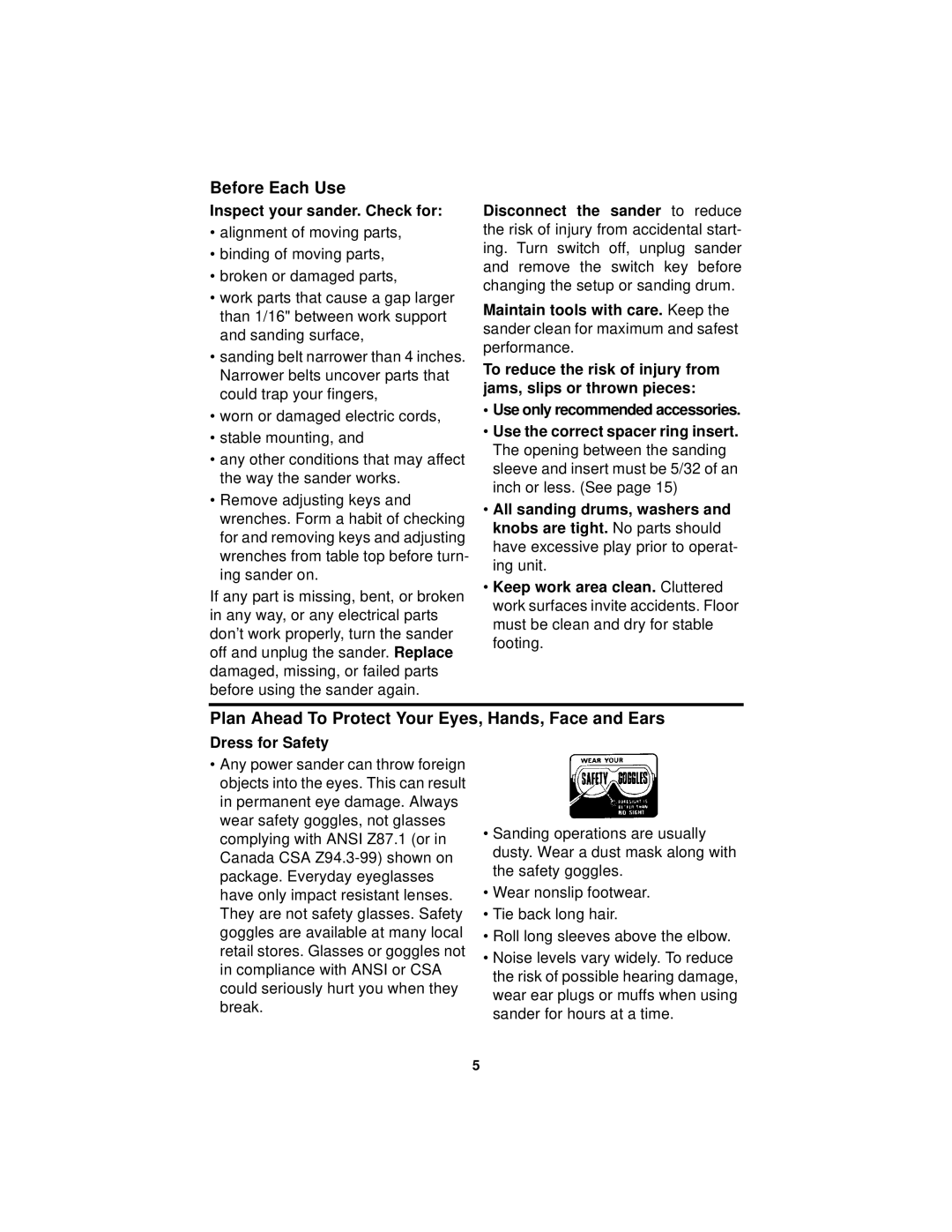
Before Each Use
Inspect your sander. Check for:
•alignment of moving parts,
•binding of moving parts,
•broken or damaged parts,
•work parts that cause a gap larger than 1/16" between work support and sanding surface,
•sanding belt narrower than 4 inches. Narrower belts uncover parts that could trap your fingers,
•worn or damaged electric cords,
•stable mounting, and
•any other conditions that may affect the way the sander works.
•Remove adjusting keys and wrenches. Form a habit of checking for and removing keys and adjusting wrenches from table top before turn- ing sander on.
If any part is missing, bent, or broken in any way, or any electrical parts don’t work properly, turn the sander off and unplug the sander. Replace damaged, missing, or failed parts before using the sander again.
Disconnect the sander to reduce the risk of injury from accidental start- ing. Turn switch off, unplug sander and remove the switch key before changing the setup or sanding drum.
Maintain tools with care. Keep the sander clean for maximum and safest performance.
To reduce the risk of injury from jams, slips or thrown pieces:
•Use only recommended accessories.
•Use the correct spacer ring insert. The opening between the sanding sleeve and insert must be 5/32 of an inch or less. (See page 15)
•All sanding drums, washers and knobs are tight. No parts should have excessive play prior to operat- ing unit.
•Keep work area clean. Cluttered work surfaces invite accidents. Floor must be clean and dry for stable footing.
Plan Ahead To Protect Your Eyes, Hands, Face and Ears
Dress for Safety
•Any power sander can throw foreign objects into the eyes. This can result in permanent eye damage. Always wear safety goggles, not glasses complying with ANSI Z87.1 (or in Canada CSA
•Sanding operations are usually dusty. Wear a dust mask along with the safety goggles.
•Wear nonslip footwear.
•Tie back long hair.
•Roll long sleeves above the elbow.
•Noise levels vary widely. To reduce the risk of possible hearing damage, wear ear plugs or muffs when using sander for hours at a time.
5
